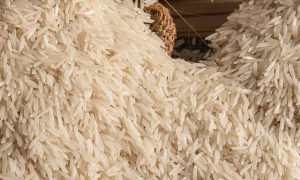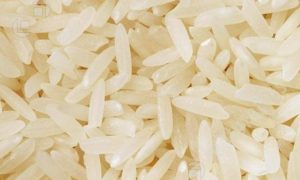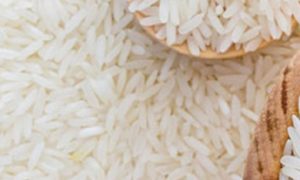Flooded paddy fields in Punjab, Haryana to depress crop yields

New Delhi: Paddy farmers in Punjab and Haryana are in distress as 60% of their cultivated land is under water after the extremely heavy rainfall between 7 July and 10 July. This may hit yields significantly resulting in lower crop production if the paddy fields are not affected further.
Punjab and Haryana have witnessed rainfall in large excess of 96% and 91% above the long period average (LPA), respectively during 1 June to 12 July. Heavy rainfall in these states has reportedly led to submergence of standing paddy crop in districts of Amritsar, Hoshiarpur, Gurdaspur and Fatehgarh in Punjab and in Ambala, Kurukshetra and Yamunanagar districts of Haryana.
About 250,000 hectares of paddy fields in 14 districts of Punjab and 150,000 hectares in seven districts of Haryana are submerged in water, according to people associated with local farm associations. These two states together contribute about 20% to India’s rice production.
Because of the rain deluge in the second week of July and overflow of water from Sutlej, Ravi and Beas that are tributaries of the Indus River in Himachal Pradesh and flow through east Punjab have affected adjoining districts of Punjab, including Jalandhar and Firozpur. About 3.2 million hectares area are under paddy cultivation in Punjab. “Paddy cannot be resown in 50% of the total 60% affected fields. The current damage indicates at least 30% less crop in the coming kharif marketing season. If it downpours further, crop loss could be more,” said Jagmohan Singh Uppal, general secretary of Bhartiya Kishan Union of Dakonda.
“The consumption of fertilisers and pesticides will increase to save crops during such weather conditions, which is not feasible for all farmers.”
Meanwhile, India Meteorological Department (IMD) predicts heavy rainfall in Himachal Pradesh and Uttarakhand until Monday, and in Punjab and Haryana during the weekend.
“Further rainfall may hit paddy crops at a time when farmers require to cultivate new seeds and wait for at least 20-22 days to get seedlings from them amid a crunch in availability of ready-made seedlings,” said Ramandeep Singh Mann, an agriculture policy expert based in Punjab. “Paddy sowing was almost 90% complete when the floods hit Punjab and Haryana,” Mann added.
Mann said, “Though most of the land is underwater, water in some lands has started receding. A major problem is the fields are unfit for running a tractor and resowing paddy seeds as massive amounts of sand and silt had covered them.”
“The normal sowing window for paddy will close by the end of July. Amid this, the only option available is plantation of two short duration varieties—PR-126 for paddy and PUSA-1509 for Basmati, but the issue is expected yield loss. With each day’s delay in sowing, agricultural crops lose certain amounts of yield. In the case of these two varieties of paddy if sown, farmers are expected to get 7-8 quintal less paddy per acre,” Mann added.
Punjab had already covered 86% (2.7 million hectares) of the expected area of 3.2 million hectares under paddy cultivation by the first week of July before the incessant rain hit the state during 7-10 July. Floodwater has submerged nearly 237,000 hectares or 585,000 acres of paddy fields, as per the initial estimates by the Punjab Agriculture Department that is yet to conduct a special ‘girdawari’ or crop inspection to gauge the actual damage in association with the Punjab Revenue Department.
Queries sent to the Union and state agriculture and farmers’ welfare ministries of Punjab and Haryana on Tuesday remained unanswered till press time.
In the case of Haryana, not only paddy but also standing sugarcane and vegetable crops were devastated by the erratic rainfall causing a flood-like situation. “A total of 400,000 hectares agriculture land has faced the hit, including 100,000 hectares under sugarcane,” informed Panchkula district president of Bharatiya Kisan Union (BKU) Shaheed Bhagat Singh (SBS) Tejveer Singh. “Farmers are facing losses not because of this but also damage to electric motors and tube wells that are used for groundwater irrigation in agriculture for smallholdings. Getting new farm equipment is difficult as these are quite costly.”
“Another major concern related to farming is electricity. Though power has been restored in many villages in Ambala, electricity remains missing in most of the areas where farmlands are located. This is because the lands are still under 10-11 feet water and electric poles pose a risk of electrocution,” Singh added.
According to agriculturists, while the affected paddy area is likely to be resown once the heavy rainfall situation normalizes, a marginal shift towards short duration crops like maize is expected from paddy, especially in Punjab. Productivity of paddy crops is seen to be hit. However, it will largely depend on rainfall in the second half of the four-month monsoon season.
“From productivity point of view, considering delayed sowing initially and anticipated then resowing due to the erratic monsoon, the crop calendar is expected to be disturbed and extended this season. However, how the rainfall pans out during critical stages of crops like flowering and grain, or fruit formation during August and September remains a key monitorable,” said Pushan Sharma, director at CRISIL Ltd.
















